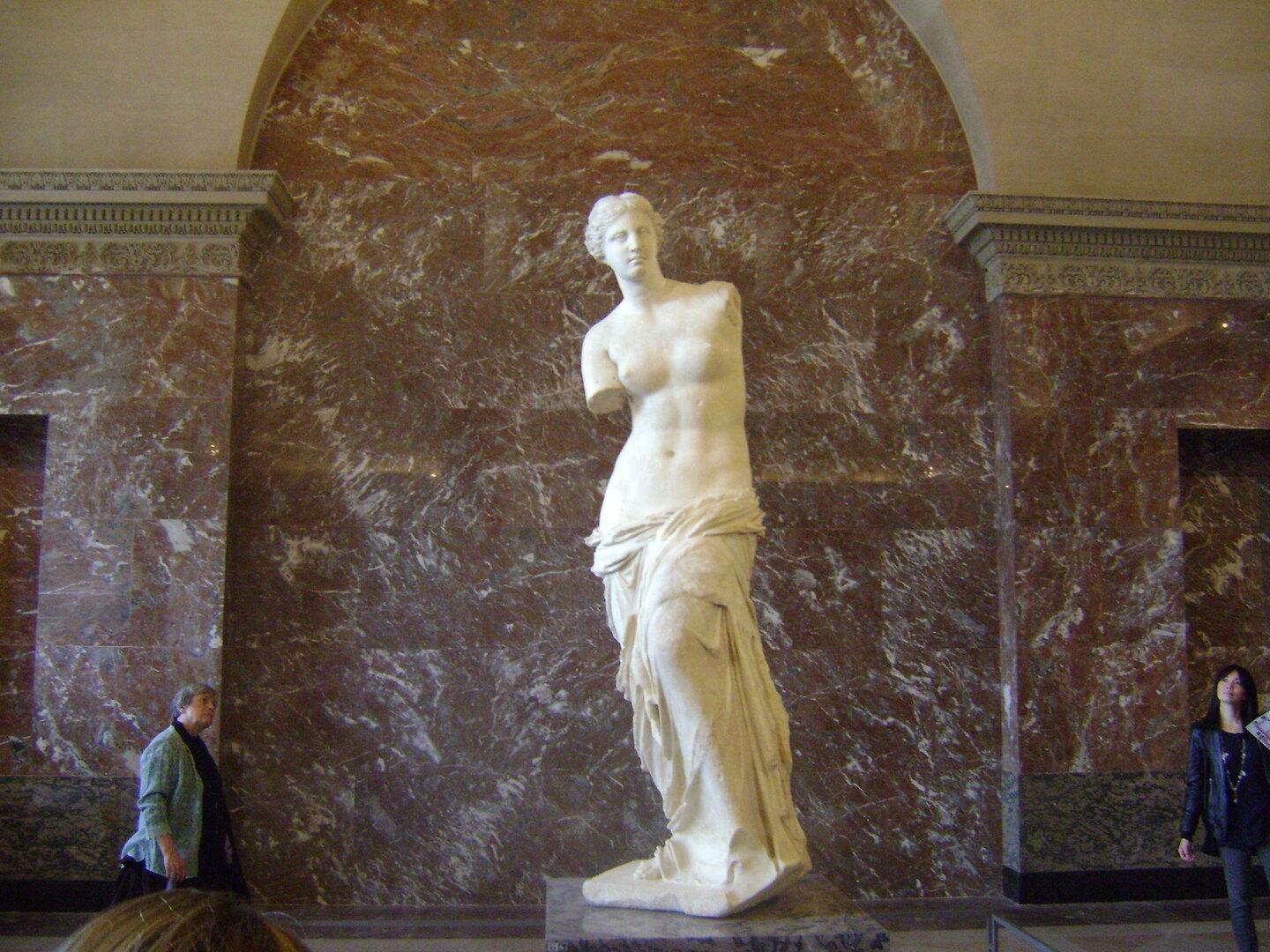La diosa del amor y la belleza, descubierta en una remota isla griega y ahora uno de los tesoros más preciados del Louvre

La Venus de Milo es una de las esculturas griegas antiguas más famosas del mundo y un ejemplo principal del arte helenístico. Creada alrededor del 130-100 a.C. durante el período helenístico tardío, esta estatua de mármol representa a Afrodita, la diosa griega del amor y la belleza.
Con más de seis pies de altura, la escultura representa a la diosa en una elegante pose contrapposto, con su peso desplazado hacia una pierna. Aunque sus brazos faltan (perdidos en la antigüedad), la belleza de la Venus de Milo radica en sus proporciones idealizadas, el sensual drapeado de su ropa, y la serena expresión en su rostro.
The sculpture was discovered in 1820 on the Greek island of Milos (then part of the Ottoman Empire) by a local farmer. French naval officer Olivier Voutier purchased it for the French government, and it was transported to Paris where it became an immediate sensation, embodying the Romantic era's fascination with classical antiquity.

The Venus de Milo's story began in 1820 when a Greek farmer named Yorgos Kentrotas was digging in his field on the island of Milos. He uncovered the upper portion of a marble statue buried in ancient ruins. Excited by his find, Kentrotas contacted local authorities, who recognized its potential importance.
French naval officer Olivier Voutier, stationed in the area, purchased the sculpture for 400 francs and presented it as a gift to King Louis XVIII of France. The statue arrived in Paris in 1821 and was immediately placed in the Louvre, where it became a symbol of French cultural prestige during the Restoration period.
The missing arms have been a subject of endless speculation. Some art historians believe they were added later and broken off, while others think the sculpture was intentionally created without arms to emphasize the goddess's serene beauty rather than action. Despite numerous attempts to "restore" the arms through reconstruction, the Venus de Milo remains proudly armless, her mystery intact.

Unlike the Mona Lisa, the Venus de Milo is usually less crowded, allowing for a more contemplative viewing experience. Take time to walk around the sculpture and appreciate it from different angles - the way the drapery falls and the subtle curves of the marble are truly mesmerizing.

Professional guide showcasing Mona Lisa, Venus de Milo, and Coronation of Napoleon with reserved access and headsets included

Fast-track entry with reserved time slot to explore Venus de Milo and 35,000 artworks at your own pace